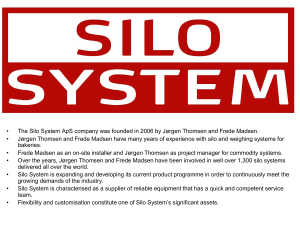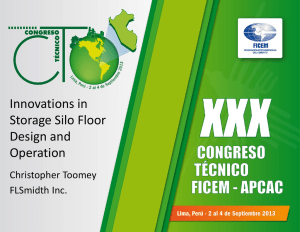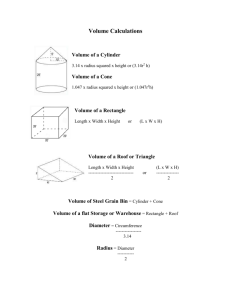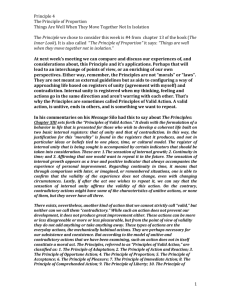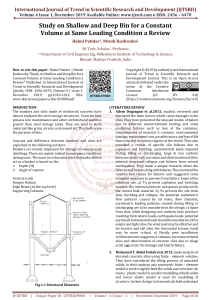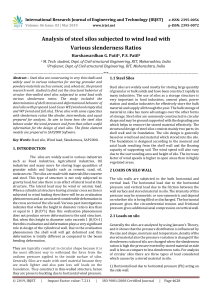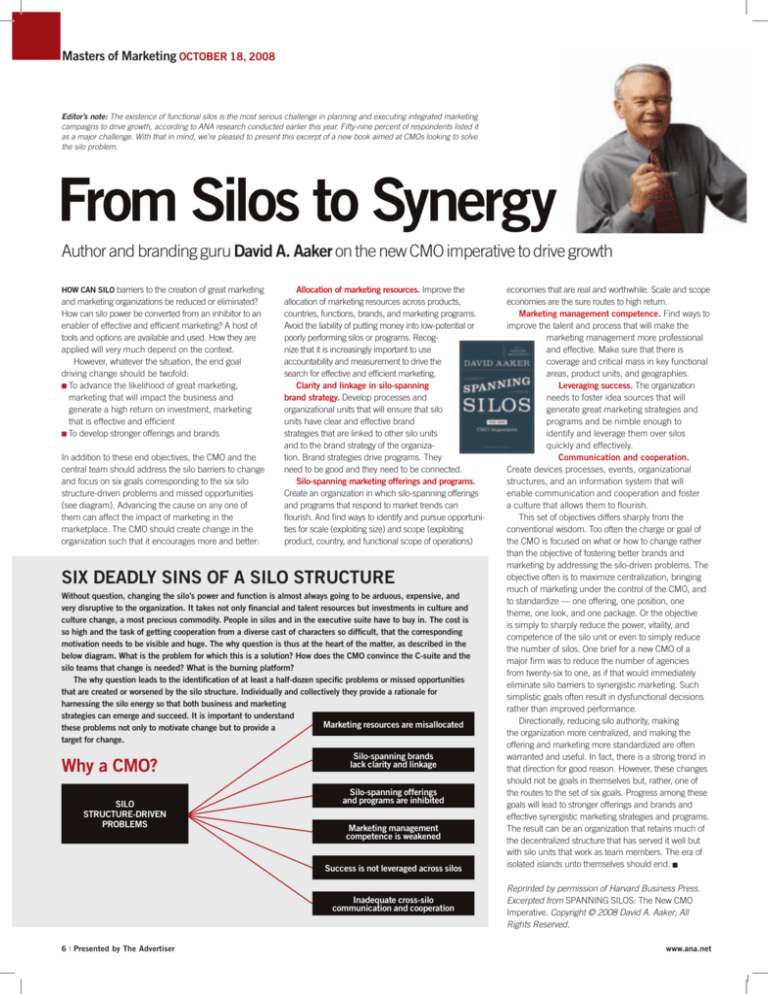
Masters of Marketing OCTOBER 18, 2008
Editor’s note: The existence of functional silos is the most serious challenge in planning and executing integrated marketing
campaigns to drive growth, according to ANA research conducted earlier this year. Fifty-nine percent of respondents listed it
as a major challenge. With that in mind, we’re pleased to present this excerpt of a new book aimed at CMOs looking to solve
the silo problem.
From Silos to Synergy
Author and branding guru David A. Aaker on the new CMO imperative to drive growth
How can silo barriers to the creation of great marketing
and marketing organizations be reduced or eliminated?
How can silo power be converted from an inhibitor to an
enabler of effective and efficient marketing? A host of
tools and options are available and used. How they are
applied will very much depend on the context.
However, whatever the situation, the end goal
driving change should be twofold:
■T
o advance the likelihood of great marketing,
marketing that will impact the business and
generate a high return on investment, marketing
that is effective and efficient
■ To develop stronger offerings and brands
In addition to these end objectives, the CMO and the
central team should address the silo barriers to change
and focus on six goals corresponding to the six silo
structure-driven problems and missed opportunities
(see diagram). Advancing the cause on any one of
them can affect the impact of marketing in the
marketplace. The CMO should create change in the
organization such that it encourages more and better:
Allocation of marketing resources. Improve the
allocation of marketing resources across products,
countries, functions, brands, and marketing programs.
Avoid the liability of putting money into low-potential or
poorly performing silos or programs. Recognize that it is increasingly important to use
accountability and measurement to drive the
search for effective and efficient marketing.
Clarity and linkage in silo-spanning
brand strategy. Develop processes and
organizational units that will ensure that silo
units have clear and effective brand
strategies that are linked to other silo units
and to the brand strategy of the organization. Brand strategies drive programs. They
need to be good and they need to be connected.
Silo-spanning marketing offerings and programs.
Create an organization in which silo-spanning offerings
and programs that respond to market trends can
flourish. And find ways to identify and pursue opportunities for scale (exploiting size) and scope (exploiting
product, country, and functional scope of operations)
Six Deadly Sins of a Silo Structure
Without question, changing the silo’s power and function is almost always going to be arduous, expensive, and
very disruptive to the organization. It takes not only financial and talent resources but investments in culture and
culture change, a most precious commodity. People in silos and in the executive suite have to buy in. The cost is
so high and the task of getting cooperation from a diverse cast of characters so difficult, that the corresponding
motivation needs to be visible and huge. The why question is thus at the heart of the matter, as described in the
below diagram. What is the problem for which this is a solution? How does the CMO convince the C-suite and the
silo teams that change is needed? What is the burning platform?
The why question leads to the identification of at least a half-dozen specific problems or missed opportunities
that are created or worsened by the silo structure. Individually and collectively they provide a rationale for
harnessing the silo energy so that both business and marketing
strategies can emerge and succeed. It is important to understand
Marketing resources are misallocated
these problems not only to motivate change but to provide a
target for change.
Why a CMO?
SILO
STRUCTURE-DRIVEN
PROBLEMS
Silo-spanning brands
lack clarity and linkage
Silo-spanning offerings
and programs are inhibited
Marketing management
competence is weakened
Success is not leveraged across silos
Inadequate cross-silo
communication and cooperation
6 | Presented by The Advertiser
economies that are real and worthwhile. Scale and scope
economies are the sure routes to high return.
Marketing management competence. Find ways to
improve the talent and process that will make the
marketing management more professional
and effective. Make sure that there is
coverage and critical mass in key functional
areas, product units, and geographies.
Leveraging success. The organization
needs to foster idea sources that will
generate great marketing strategies and
programs and be nimble enough to
identify and leverage them over silos
quickly and effectively.
Communication and cooperation.
Create devices processes, events, organizational
structures, and an information system that will
enable communication and cooperation and foster
a culture that allows them to flourish.
This set of objectives differs sharply from the
conventional wisdom. Too often the charge or goal of
the CMO is focused on what or how to change rather
than the objective of fostering better brands and
marketing by addressing the silo-driven problems. The
objective often is to maximize centralization, bringing
much of marketing under the control of the CMO, and
to standardize — one offering, one position, one
theme, one look, and one package. Or the objective
is simply to sharply reduce the power, vitality, and
competence of the silo unit or even to simply reduce
the number of silos. One brief for a new CMO of a
major firm was to reduce the number of agencies
from twenty-six to one, as if that would immediately
eliminate silo barriers to synergistic marketing. Such
simplistic goals often result in dysfunctional decisions
rather than improved performance.
Directionally, reducing silo authority, making
the organization more centralized, and making the
offering and marketing more standardized are often
warranted and useful. In fact, there is a strong trend in
that direction for good reason. However, these changes
should not be goals in themselves but, rather, one of
the routes to the set of six goals. Progress among these
goals will lead to stronger offerings and brands and
effective synergistic marketing strategies and programs.
The result can be an organization that retains much of
the decentralized structure that has served it well but
with silo units that work as team members. The era of
isolated islands unto themselves should end. ■
Reprinted by permission of Harvard Business Press.
Excerpted from SPANNING SILOS: The New CMO
Imperative. Copyright © 2008 David A. Aaker; All
Rights Reserved.
www.ana.net


